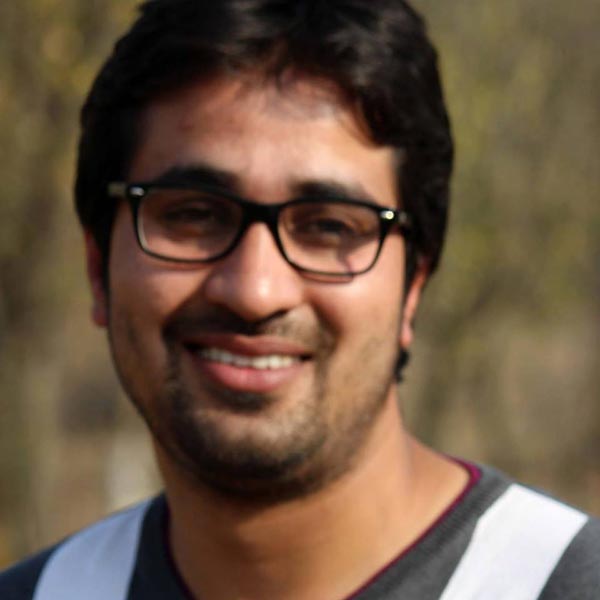
By Tasavur Mushtaq
A frightening lull took over after Mufti Mohammad Sayeed’s demise in AIIMS. For most of the 98 days during which Ms Mehbooba Mufti came out of her “consistent reluctance” the alliance has started impacting the tectonic balance at ground zero. By the time, she took over on April 4; table-talks had metamorphosed into concrete issues.
Within a few days after she took-over, NIT Srinagar emerged a much bigger newsmaker. Non local student triggered a ruckus on “anti-national” activities to a level that Smriti Irani flew an HRD team to take care of the campus. As the “students” insisted on their demand that the campus day should start with the unfurling of the tricolor, it started creating compression in Kashmir’s ideological vertebrae. But the government could feel the accumulation of mess and moved swiftly by emptying the campus for the time being only to find that it was Sangh Parivaar at work.
The government started dusting files and then Handwara happened. As guns opened, it paralyzed Kashmir for almost a week. Many thought, it was the “moment” that they had been talking about since BJP and PDP stitched the alliance. Somehow, good sense prevailed as Engineer Rashid helped calm tempers.
By the middle of May, the issue of proposed Sainik colony in Srinagar had triggered serious apprehensions of a looming crisis. Being pursued silently by the concerned for last many years, the Parivaar, in a bid to address its constituency started loud-thinking. As Kashmir started reacting to the development, top BJP leaders put their weight behind the idea in Jammu and in Delhi. As it peaked, government said it has no land.
Parivaar has been chasing its agenda on various fronts. As BJP is part of the power-structure in the state, for the first time in history, where it has to abide by various limitations, its affiliates use all possible spaces – streets, courts and even newsprint, to get what it aspires for. With BJP on its side, PDP encouraged the party to settle some of these issues at the Parivaar level.
By June the assembly was in session. Its continued news creation, engaged people on development, politics, jobs and other things. Eid was celebrated with traditional fervour and then came the D-day, July 8, when teenage rebel Burhan Wani was killed in an encounter. Then things changed completely.
The lava that had accumulated over the months started gushing out with full force as Burhan emerged an iconic character. Feeling mood of the masses, Hurriyat leaders initially wanted a day long mourning strike and then jumped to three days and then they discovered the ‘calendar’. For 51 days, Kashmir was under uninterrupted curfew restrictions.
By the time, the government could find a room to react; the security grid had heaped the corpses. Then pellet dispersal created a new population of underdogs, some having been completely blinded. One killing led to another and the cycle continued, uninterrupted. The frustration took over in Srinagar and Delhi. In the first three fortnights, the security grid could not get even a single “suspect” barring the separatists.
As it prolonged, the governments in Delhi started devising plans. Initially, sections in Delhi were keen to react and engage. Srinagar was not supportive of the idea. This, they were told, could reduce their influence on the turf.
Then, as a matter of policy Doval doctrine took over. National Security Adviser (NSA), Ajit Doval has been a known hawk and was handpicked by the Prime Minister Narendra Modi to manage the crucial security set up. From the very start, he was suggestive of a policy that Kashmir’s separatists should be permitted to do whatever they wish. He wanted to test their capacity for how long can they make protest as part of their politics. He championed for wait and watch, knowing fully that at the end of the day, the people will have to come out and pick up threads from the routine. Separatist triumvirate was not permitted to even discuss the strategy for a counter as they were kept separate from each other – one in Hyderpora, another in central jail and another one in Cheshma Shahi.
By the time, they were permitted to be accessible, it was already too late. When they understood the plan, they invited “stakeholders” to suggest them. Well briefed by the government, they supported continuation of the strike. By now, the three leaders were literally caught in their own web. They eventually started relaxing things that coincided with the impatience of the people to move out of the homes after remaining caged for so many months.
But that did not prevent Kashmir from becoming a headline globally. UN Security Council, after many years, heard intense debate on Kashmir. All of a sudden Nawaz Sharief, Pakistan premier discovered Burhan for an international audience. To ensure that diplomacy gets a different turn, war euphoria took over after “surgical strikes” were made public. As media started postulating war, debate kicked towards preventing escalations. But that was it.
With mass promotion to students and successful conduct of examinations, government started reworking its outreach. There were initial hiccups but now they move, interact and promise.
Interestingly, when the situation started crawling towards a semblance of normalcy, Delhi announced Rs 2000 crore for rehabilitation of Hindu refugees from Pakistani part of Kashmir – a huge sum being invested for the first time since they migrated in 1947. Soon after, the issue of “domicile” certificates to West Pakistan Refugees cropped up.
The pot is boiling. It shall remain so in coming days too. But boiling is still better than bursting.















